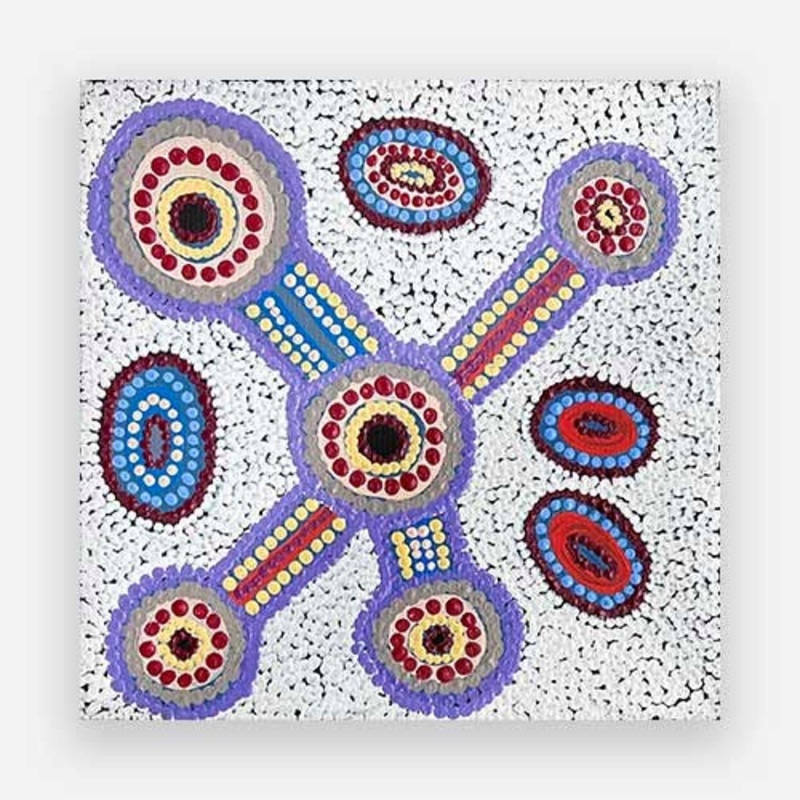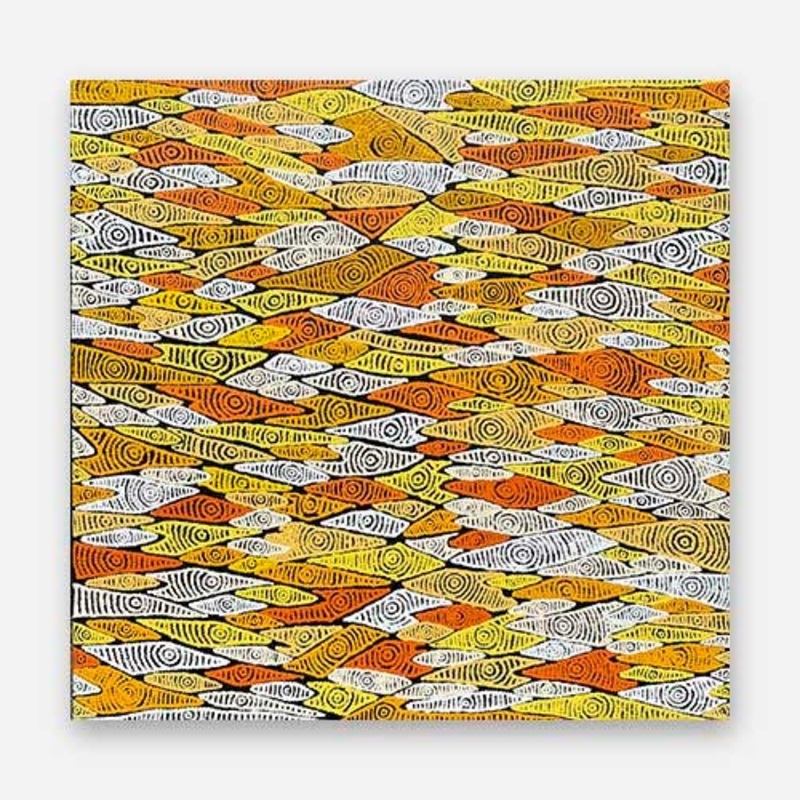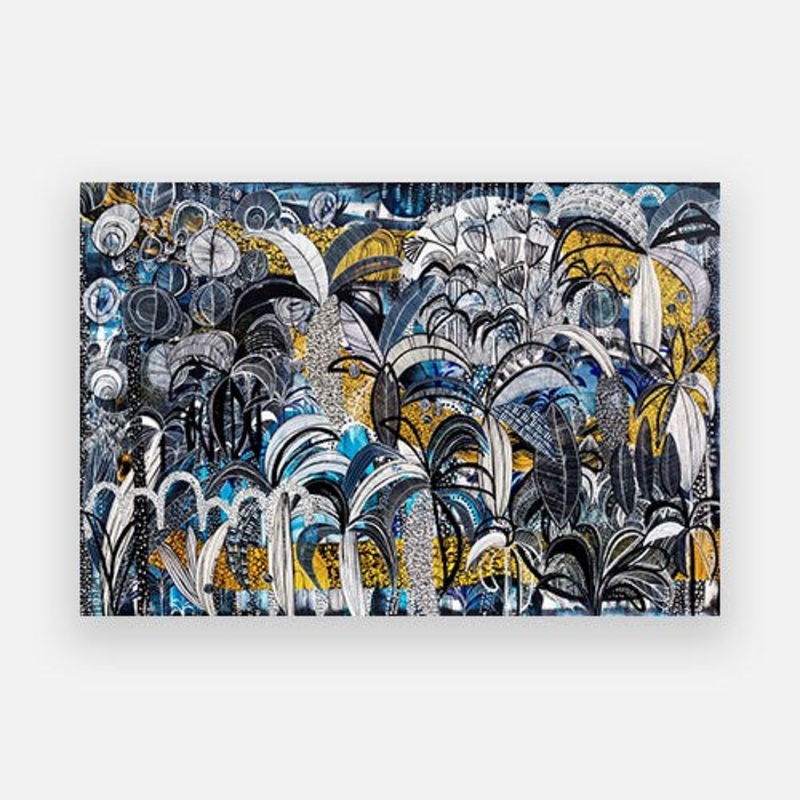Yurrampi Jukurrpa (Honey Ant Dreaming) 01
Original Art This painting depicts a yurrampi Jukurrpa (honey ant Dreaming). This Jukurrpa has special significance for Warlpiri people living in Yuendumu because it passes right through the Yuendumu community. Yuendumu is therefore also called Yurrampi (h
Original Art
This painting depicts a yurrampi Jukurrpa (honey ant Dreaming). This Jukurrpa has special significance for Warlpiri people living in Yuendumu because it passes right through the Yuendumu community. Yuendumu is therefore also called Yurrampi (honey ant) for this reason. The kirda (owners) of this Jukurrpa are Japangardi/Japanangka men and Napangardi/Napanangka women.
This yurrampi Jukurrpa begins southeast of Yuendumu at Yulumu and travels west. The honey ant ancestors made passages and chambers underground as they traveled, which created the soakages that remain today. After Yulumu, the yurrampi went west to Yulyupunyu, a small hill called Yamparlinyi, and a place called Yakurrukaji, where they made a soakage. This soakage at Yakurrukaji supplied water to the original settlement of Yuendumu and is where Yuendumus houses stand today.
After leaving Yakurrukaji, the yurrampi went on to a place called Wanakurduparnta west of Yuendumu, where they sat and attracted other yurrampi ancestors to them. Some of the yurrampi eventually went back east underground and died at Yulyupunyu, while others went back and died at Yulumu. The yurrampi Jukurrpa at Yuendumu is also associated with a wakapartari Jukurrpa (mulga worm Dreaming) and jipilyaku Jukurrpa (duck Dreaming), all of which overlap at Yakurrukaji.
Yurrampi (also called yunkaranyi) are a prized delicacy, considered well worth the enormous effort it takes to dig them out of the ground. Honey ant nests can be located by looking for honey ants that are walking around on the ground and following them back to the entrance of their nest. These foraging honey ants are called jaka-liirli and can be identified by a little yellow stripe on their bottoms.
When digging up the nest, people look for streaks of bright red soil (kanjirtirirtiri) that signify that they are getting close to the underground honey ant chambers (called minki). Honey ants dig tunnels quite deep underground in jirrijirrirnpa (mulga woodland country). Branching from these passageways are chambers in which the edible honey ants are suspended from the ceilings, full of nectar collected from yanyirlingi (desert fuchsia). With their swollen abdomens, the ants are unable to move. People pick them out, gather them in parraja (coolamons), and eat their abdomens, which taste like honey.
In contemporary Warlpiri paintings, traditional iconography can be used to represent the Jukurrpa, particular sites, and other elements. In paintings of this Jukurrpa, concentric circles can represent the soakages created by the yurrampi ancestors. These circles can be connected by lines representing the yurrampi ancestors tracks. Straight lines can represent the karlangu (digging sticks) used to dig up the honey ant nests.
Please note: Original paintings on canvas are firmly wrapped around stretcher bars, also known as ‘stretched’. For any international shipments (outside of Australia), these paintings will be shipped unstretched and rolled to ensure their safe delivery. Pleasecontact us for any enquiries.
Additionally, this unique painting may also be available to purchase in-store. Should it be sold to an in-store buyer prior to an online sale, we will promptly contact you to arrange a refund and discuss alternative art options.






Reviews
There are no reviews yet.